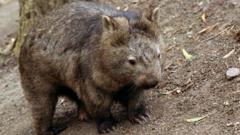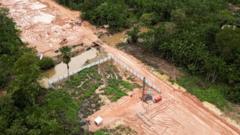A cattle farmer in Oklahoma has successfully improved stream health by implementing fencing to keep cows away from Horse Creek, leading to reduced pollution and restoration of natural ecosystems.
Innovative Farming Practices Lead to Cleaner Streams in Oklahoma

Innovative Farming Practices Lead to Cleaner Streams in Oklahoma
Oklahoma sets a precedent in environmental restoration through effective management of livestock access to waterways.
In Oklahoma, a remarkable environmental improvement has been witnessed, especially concerning the quality of streams across the state. By adopting innovative farming practices to manage livestock waste, Oklahoma has emerged as a leader in restoring polluted waterways. One farmer's initiative exemplifies this success story.
Grant Victor, whose family has owned land in northeast Oklahoma since the 1890s, was confronted with the consequences of unregulated cattle access to Horse Creek. Years of bovine presence had fostered degradation, leading to muddy banks and waterways saturated with sediment and animal waste. In response, Victor took a proactive approach in 2016, collaborating with a conservation program to establish fencing around Horse Creek. This strategic move created a protective buffer, even though it meant restricting cattle access to 220 acres of pasture—about 6% of his family's land.
The results of Victor's initiative were swift and remarkable. Within a short span, he noted a decrease in veterinary expenses due to healthier cattle, and wildlife began to return to the rejuvenated area. Today, Horse Creek has been removed from the state’s list of highly contaminated waterways.
Oklahoma's efforts to improve water quality have not gone unnoticed. According to the Environmental Protection Agency, the state has managed to restore around 100 streams that were once heavily affected by runoff from agricultural activities, marking it as a leader in such environmental recovery efforts in the nation.
As part of the "50 States, 50 Fixes" series highlighting localized environmental solutions, Oklahoma’s achievement serves as a benchmark for other states facing similar challenges. Moving forward, it illustrates that comprehensive and sustainable farming practices can foster ecological balance while benefiting both farmers and natural ecosystems alike.
Grant Victor, whose family has owned land in northeast Oklahoma since the 1890s, was confronted with the consequences of unregulated cattle access to Horse Creek. Years of bovine presence had fostered degradation, leading to muddy banks and waterways saturated with sediment and animal waste. In response, Victor took a proactive approach in 2016, collaborating with a conservation program to establish fencing around Horse Creek. This strategic move created a protective buffer, even though it meant restricting cattle access to 220 acres of pasture—about 6% of his family's land.
The results of Victor's initiative were swift and remarkable. Within a short span, he noted a decrease in veterinary expenses due to healthier cattle, and wildlife began to return to the rejuvenated area. Today, Horse Creek has been removed from the state’s list of highly contaminated waterways.
Oklahoma's efforts to improve water quality have not gone unnoticed. According to the Environmental Protection Agency, the state has managed to restore around 100 streams that were once heavily affected by runoff from agricultural activities, marking it as a leader in such environmental recovery efforts in the nation.
As part of the "50 States, 50 Fixes" series highlighting localized environmental solutions, Oklahoma’s achievement serves as a benchmark for other states facing similar challenges. Moving forward, it illustrates that comprehensive and sustainable farming practices can foster ecological balance while benefiting both farmers and natural ecosystems alike.





















